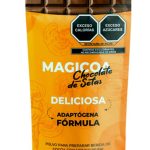As an Amazon Associate ,I earn from qualifying purchase .
In recent years, healthcare providers have increasingly recognized the importance of diet in managing health and preventing chronic illnesses. One such initiative comes from Humana, which has introduced a unique tool for its members – the Humana Healthy Food Card. This card allows members to access a wide variety of nutritious foods at reduced costs, encouraging them to make healthier choices. This article provides an in-depth examination of the Humana Healthy Food Card list, highlighting its benefits, key foods, and ways to make the most out of this initiative for a balanced lifestyle.

What is the Humana Healthy Food Card?
The Humana Healthy Food Card is a benefit provided to eligible Humana Medicare Advantage plan members. Each month, qualifying individuals receive a pre-loaded card with funds that can be spent on approved food items. The primary goal of this program is to promote good health by making nutritious food more accessible and affordable.
Humana carefully curates the card’s eligible food list to include items that meet specific nutritional standards. This supports individuals in reducing processed food intake and increasing their consumption of whole, nutrient-rich foods, which are critical for long-term wellness.
Key Benefits of the Humana Healthy Food Card
- Accessibility to Nutritious Foods: The card allows individuals to access wholesome food options that they may have otherwise bypassed due to cost constraints. With more affordable choices, they’re more likely to choose fruits, vegetables, and lean proteins.
- Disease Prevention: A nutritious diet can prevent a range of health issues, including diabetes, heart disease, and obesity. By encouraging a nutrient-rich diet, Humana’s food card aims to improve members’ quality of life while helping to reduce healthcare costs.
- Monthly Allocation: Each month, cardholders receive a fixed amount that can be spent on food. This monthly support ensures a regular supply of nutritious options, helping individuals to sustain healthy eating habits over time.
- Ease of Use: The card can be used at a variety of retailers, including major grocery stores, making it convenient and easy for individuals to integrate healthy shopping into their routines.
- Encouragement for Better Choices: By limiting eligible purchases to healthy items, Humana directs cardholders towards nutrient-dense food choices rather than processed, calorie-dense foods.

Understanding the Humana Healthy Food Card List
The Humana Healthy Food Card list is thoughtfully designed to cover essential food groups, supporting balanced nutrition and optimal health. Let’s examine the food groups included in the card list and explore the role each group plays in a healthy diet.
Fruits and Vegetables
- Why They’re Included: Fruits and vegetables are fundamental sources of vitamins, minerals, and antioxidants, all of which contribute to a healthy immune system, good digestion, and reduced inflammation.
- Notable Options: Fresh, frozen, and canned options without added sugars or salt are generally included. The card allows for a variety of options, including leafy greens like spinach, cruciferous vegetables like broccoli, and nutrient-packed fruits such as berries and oranges.
- Nutritional Benefits: These foods are high in fiber, aiding in digestion, lowering cholesterol levels, and reducing the risk of heart disease.

Whole Grains
- Why They’re Included: Whole grains provide sustained energy and are rich in fiber, B vitamins, iron, magnesium, and selenium.
- Notable Options: Approved items often include whole wheat bread, brown rice, oats, and quinoa. Whole grains have a lower glycemic index, which helps in regulating blood sugar levels.
- Nutritional Benefits: Consuming whole grains supports metabolic health, keeps you fuller longer, and reduces the risk of type 2 diabetes.
Lean Proteins
- Why They’re Included: Protein is essential for tissue repair, immune function, and maintaining muscle mass.
- Notable Options: Common lean protein options on the Humana Healthy Food Card list include skinless chicken, turkey, fish, eggs, beans, and lentils.
- Nutritional Benefits: Lean proteins provide essential amino acids without the excess fats found in processed meats. They support muscle health, hormone regulation, and cellular repair, particularly in seniors who may experience muscle loss.
Low-Fat Dairy
- Why They’re Included: Dairy products are high in calcium and vitamin D, essential for bone health, especially among older adults.
- Notable Options: The card includes items like low-fat milk, yogurt, and cheese. Options with reduced fat content help manage calorie intake while delivering essential nutrients.
- Nutritional Benefits: Low-fat dairy supports bone density, dental health, and heart health due to lower saturated fat levels compared to full-fat dairy products.
Healthy Fats
- Why They’re Included: Healthy fats are crucial for brain health, hormone production, and the absorption of fat-soluble vitamins.
- Notable Options: The card includes foods like olive oil, avocado, and certain nuts and seeds. These contain unsaturated fats, which support cardiovascular health.
- Nutritional Benefits: Incorporating healthy fats into the diet can help lower LDL cholesterol, promote cognitive function, and reduce inflammation.
Nutritious Snacks
- Why They’re Included: Snacks can prevent overeating during meals and help maintain energy levels throughout the day.
- Notable Options: Humana-approved snacks may include items such as unsweetened applesauce, mixed nuts, rice cakes, and whole-grain crackers. Such snacks avoid excessive sugars and artificial ingredients.
- Nutritional Benefits: Healthier snacks prevent blood sugar spikes and crashes, keep energy levels stable, and contribute to overall nutrient intake.

How to Maximize the Benefits of the Humana Healthy Food Card
- Plan Balanced Meals: Use the card to buy ingredients for balanced meals containing all three macronutrients (carbohydrates, proteins, and fats). For example, create a balanced dinner with salmon, a serving of quinoa, and a side of steamed vegetables.
- Focus on Whole Foods: Choose fresh, whole foods over processed options whenever possible. Whole foods retain more of their natural nutrients and are generally more filling than processed foods.
- Choose Variety: Use the card to try different fruits, vegetables, and grains each month. This variety will ensure you’re getting a wide range of vitamins and minerals.
- Consider Meal Prep: Preparing meals in advance helps avoid impulsive, less nutritious choices. Plan and purchase ingredients for the week, and set aside time to prepare meals in batches.
- Utilize Discounts and Sales: Maximize card benefits by taking advantage of sales on items included in the Humana Healthy Food Card list, especially for non-perishable items like brown rice, pasta, or canned vegetables.
- Experiment with Recipes: Trying new recipes can make healthy eating enjoyable. Use online resources to find recipes that focus on whole foods covered by the card.

The Impact of a Healthy Diet on Long-Term Wellness
The Humana Healthy Food Card list doesn’t just provide financial relief; it directly impacts the quality of life by promoting a diet that can prevent disease and improve vitality. Studies have shown that diets high in fruits, vegetables, lean proteins, and whole grains are associated with reduced risks of heart disease, stroke, diabetes, and certain cancers. Furthermore, individuals following balanced diets generally report improved energy levels, better mental clarity, and enhanced emotional well-being.
Key Statistics Highlighting the Impact of Nutrition:
- According to the CDC, a balanced diet rich in whole foods can reduce the risk of heart disease by up to 50%.
- Research published in The American Journal of Clinical Nutrition notes that diets high in whole grains are linked to a 22% reduction in the risk of developing type 2 diabetes.
- In older adults, sufficient protein intake is associated with a 30% reduction in age-related muscle loss, known as sarcopenia.
By guiding members to make these healthier choices, Humana’s program addresses both immediate nutritional needs and the broader goal of fostering healthier lifestyles.

Conclusion
The Humana Healthy Food Card list is a practical resource for individuals looking to make healthier food choices without financial strain. By prioritizing essential food groups such as fruits, vegetables, whole grains, lean proteins, low-fat dairy, and healthy fats, the card serves as a tool for promoting long-term health and wellness. Taking advantage of this benefit by planning meals, choosing a variety of foods, and focusing on whole foods can significantly improve dietary habits and support overall health.
As Humana and similar programs continue to recognize the role of diet in preventive healthcare, members can look forward to enhanced quality of life, reduced healthcare costs, and a proactive approach to wellness.







